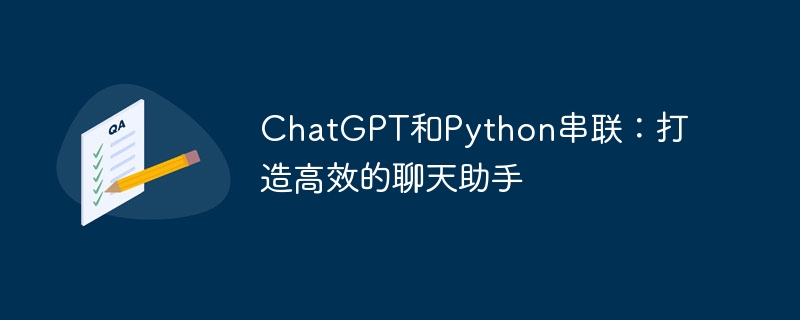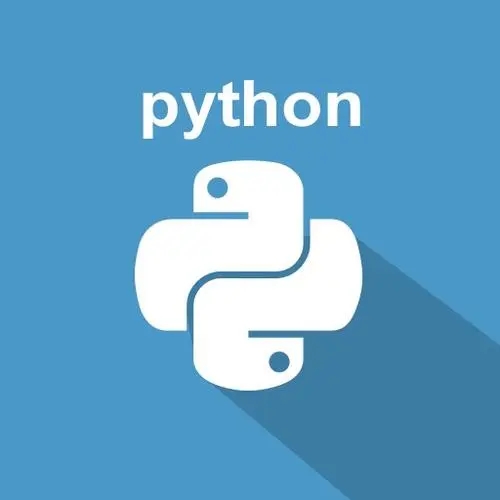
ChatGPT和Python串联:打造高效的聊天助手
引言:
在如今的信息时代,人工智能技术的进步为我们的生活带来了诸多便利。而聊天机器人作为人工智能技术的一项重要应用,已经在各个领域发挥着重要作用。ChatGPT作为开源的大规模预训练语言模型之一,具备出色的对话生成能力。结合Python编程语言,我们可以借助ChatGPT来打造一个高效的聊天助手。本文将详细介绍如何将ChatGPT和Python进行串联,并给出具体的代码示例。
一、安装依赖库
在开始之前,我们需要先安装一些必要的Python库:
在Python环境中执行以下命令即可安装这些依赖库:
立即学习“Python免费学习笔记(深入)”;
pip install transformers torch numpy
二、加载ChatGPT模型
为了使用ChatGPT进行聊天生成,我们需要加载预训练好的ChatGPT模型。transformers库提供了方便的函数来加载ChatGPT模型。下面的代码演示了如何加载ChatGPT模型:
from transformers import GPT2LMHeadModel, GPT2Tokenizer model_name = "gpt2-medium" # ChatGPT模型的名称 model = GPT2LMHeadModel.from_pretrained(model_name) tokenizer = GPT2Tokenizer.from_pretrained(model_name)
在这个例子中,我们选择了ChatGPT的中等模型"gpt2-medium",你也可以根据需要选择其他规模的模型。
三、编写对话生成函数
接下来,我们可以编写一个用于对话生成的函数。这个函数接受用户输入的对话内容作为参数,并返回ChatGPT生成的回复。
def generate_response(input_text, model, tokenizer, max_length=50):
# 将输入文本编码成token序列
input_ids = tokenizer.encode(input_text, return_tensors='pt')
# 使用ChatGPT模型生成回复
output = model.generate(input_ids, max_length=max_length, num_return_sequences=1)
# 将生成的回复解码成文本
response = tokenizer.decode(output[:, input_ids.shape[-1]:][0], skip_special_tokens=True)
return response这个函数中,input_text是用户输入的对话内容。model是我们加载的ChatGPT模型。tokenizer则是用于将文本编码成token序列的工具。max_length参数指定生成的回复的最大长度。
四、实现聊天助手
现在我们已经有了加载ChatGPT模型和生成回复的函数,我们可以将它们组合起来,实现一个简单的聊天助手。
while True:
user_input = input("You: ") # 获取用户的输入
response = generate_response(user_input, model, tokenizer) # 生成回复
print("ChatGPT: " + response) # 打印ChatGPT的回复这段代码将启动一个交互式的聊天界面,用户可以输入对话内容,ChatGPT会生成回复并打印在屏幕上。按下Ctrl+C即可退出。
总结:
通过将ChatGPT和Python进行串联,我们可以轻松构建一个高效的聊天助手。在本文中,我们介绍了加载ChatGPT模型、编写对话生成函数以及实现聊天助手的过程,并给出了具体的代码示例。希望本文能为你构建聊天助手提供一些指导和帮助。祝你在人工智能的世界中取得成功!
以上就是ChatGPT和Python串联:打造高效的聊天助手的详细内容,更多请关注php中文网其它相关文章!

python怎么学习?python怎么入门?python在哪学?python怎么学才快?不用担心,这里为大家提供了python速学教程(入门到精通),有需要的小伙伴保存下载就能学习啦!

Copyright 2014-2025 https://www.php.cn/ All Rights Reserved | php.cn | 湘ICP备2023035733号